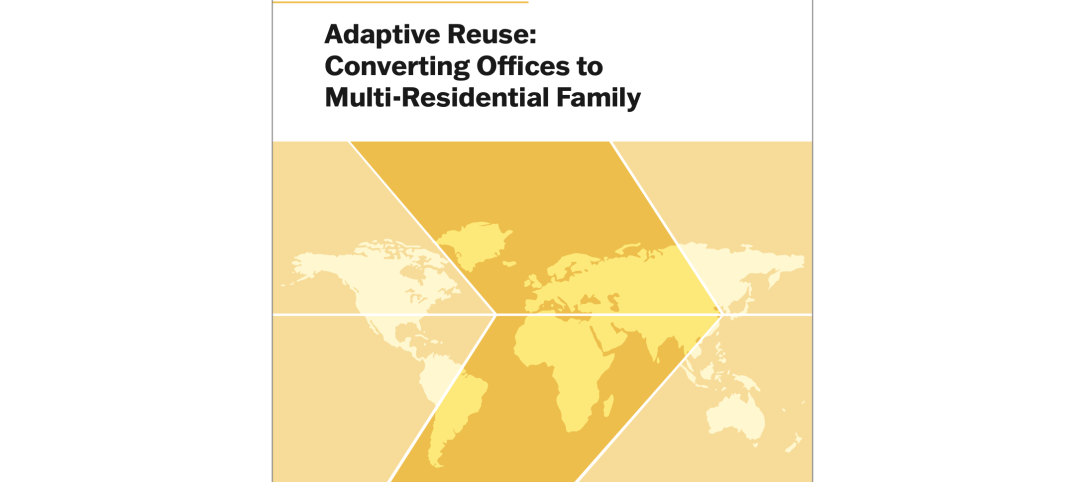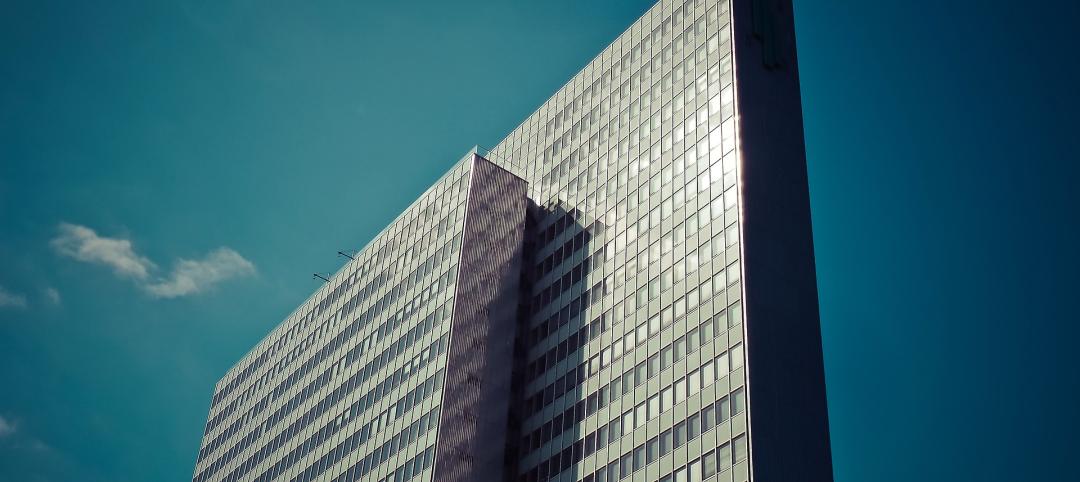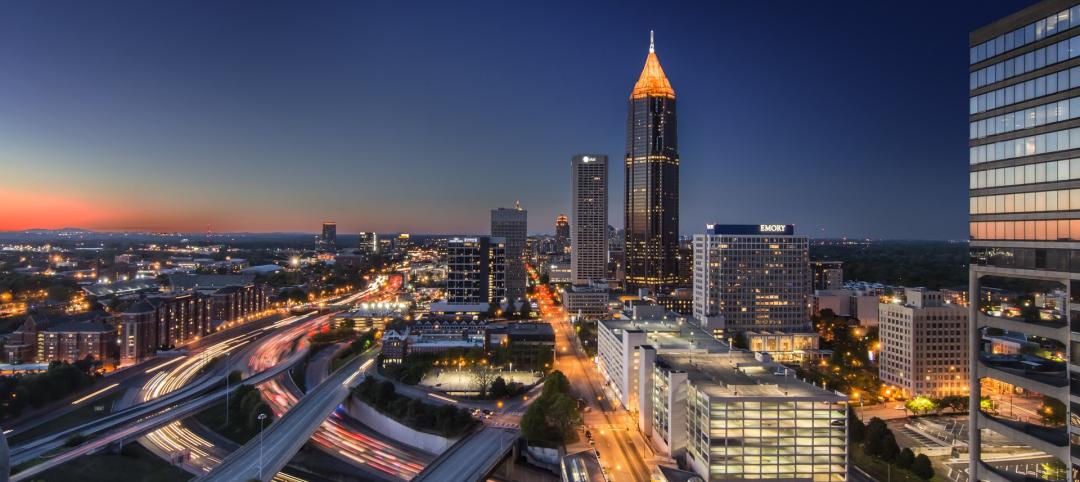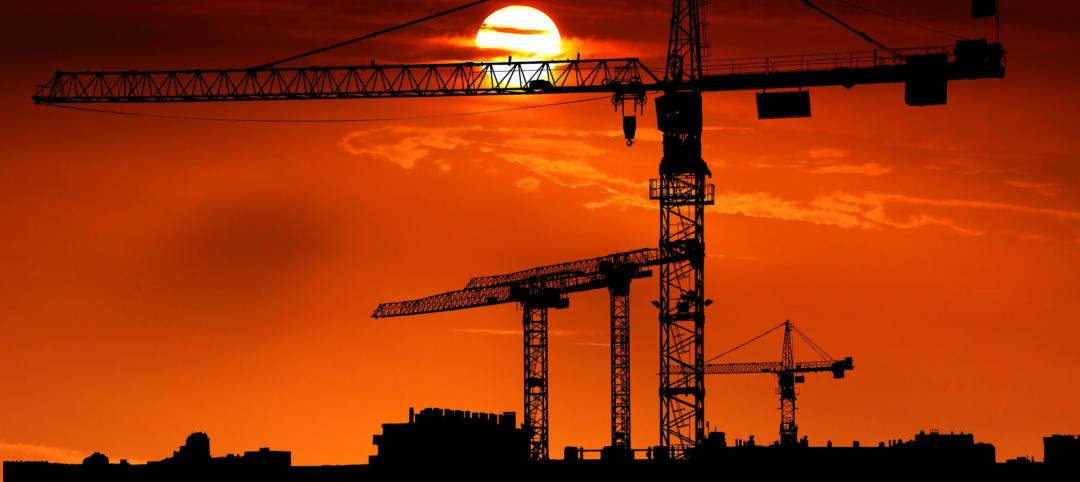The American Institute of Architects' Committee on the Environment (COTE) has selected the top ten examples of sustainable architecture and ecological design projects that protect and enhance the environment. The projects will be honored at the AIA 2014 National Convention and Design Exposition in Chicago.
The COTE Top Ten Awards program, now in its 18th year, is the profession's best known recognition program for sustainable design excellence. The program celebrates projects that are the result of a thoroughly integrated approach to architecture, natural systems, and technology.
These projects make a positive contribution to their communities, improve comfort for building occupants, and reduce environmental impacts through strategies such as reuse of existing structures, connection to transit systems, low-impact and regenerative site development, energy and water conservation, use of sustainable or renewable construction materials, and design that improves indoor air quality.
The 2014 COTE Top Ten Green Projects jury included: Frederick Steiner, School of Architecture at the University of Texas at Austin; Catherine Gavin, Texas Architect; Bill Browning, Hon. AIA, Terrapin Bright Green; Thomas E. Simpson, PE, LEED AP, US East Integral Group; and Jennifer Yoos, FAIA, LEED AP, VJAA.
Here's a recap of the 2014 winners:
1. Arizona State University Student Health Services, Tempe, Ariz
Lake|Flato Architects + Orcutt|Winslow
Photos: Bill Timmerman
The Arizona State University (ASU) Health Services Building is an adaptive reuse project that transformed the existing sterile and inefficient clinic into a clearly organized, efficient, and welcoming facility. The design imbues the new facility with a sense of health and wellness that leverages Tempe’s natural environment and contributes to a more cohesive pedestrian oriented campus. The building’s energy performance is 49% below ASHRAE 90.1-2007, exceeding the current target of the 2030 Challenge. The facility achieved LEED Platinum certification and is one of the best energy performers on campus as evidenced by ASU’s Campus Metabolism interactive web-tool tracking real-time resource use.
2. Bud Clark Commons, Portland, Ore.
Holst Architecture
Photos: Sally Schoolmaster
As a centerpiece of Portland’s 10-Year Plan to End Homelessness, this LEED Platinum project provides a continuum of services to help transition homeless individuals toward stable, permanent living arrangements. The architecture helps achieve this goal with a walk-in day center with public courtyard and access to support services; a 90-bed temporary shelter; and a separate and secure entrance to 130 efficient, furnished studio apartments for homeless individuals seeking permanent housing.
The building’s design aims to deinstitutionalize services and housing for the most vulnerable in our population. Sustainable features include large-scale graywater recycling, zero stormwater runoff, solar hot water, and a high-performance envelope, resulting in energy savings estimated at $60,000 annually.
3. Bushwick Inlet Park, Brooklyn, N.Y.
Kiss + Cathcart, Architects
Photos: Paul Warchol
This project is the first phase of the transformation of the Greenpoint–Williamsburg waterfront from a decaying industrial strip to a multifaceted public park. The design team integrated a program of playfields, public meeting rooms, classrooms, and park maintenance facilities, into a city-block sized site. The park building becomes a green hill on the west side, making 100% of the site usable to the public, and offering views to Manhattan. Below the green roof is a complex of building systems – ground source heat pump wells, rainwater harvest and storage, and drip irrigation. A solar trellis produces half the total energy used in the building.
4. Edith Green-Wendell Wyatt Federal Building Modernization, Portland, Ore.
SERA Architects in association with Cutler Anderson Architects
Photo credit: Nic Lehoux
On track to be one of the lowest energy-use buildings in the U.S., EGWW is a model for U.S. General Services Administration nationwide. The project’s goal was to transform the existing building from an aging, energy hog to one of the premiere environmentally-friendly buildings in the nation. With a unique facade of “reeds”, light shelf /sunshades designed by orientation and a roof canopy that supports a 180 kW photovoltaic array while collecting rainwater, EGWW pushes the boundaries for innovative sustainable deign strategies. In addition to the energy improvements, the design reveals the history of the building, exposing the artifacts of the original builders.
5. Gateway Center - SUNY-ESF College of Environmental Science & Forestry, Syracuse, N.Y.
Architerra
Photos: David Lamb Photography
The SUNY-ESF College of Environmental Science & Forestry Gateway Center is a striking symbol of environmental stewardship and climate action leadership. This LEED Platinum campus center meets ESF’s goal of reducing the overall carbon footprint of the campus through net positive renewable energy production, while creating a combined heat and power plant and intensive green roof that serve as hands-on teaching and research tools. The double-ended bioclimatic form exemplifies passive solar design. Net positive energy systems integrated with the design serve four adjacent ESF buildings, providing 60% of annual campus heating needs and 20% of annual power needs.
6. John & Frances Angelos Law Center, Baltimore, Md.
Behnisch Architekten and Ayers Saint Gross
Photos: Brad Feinknopf
The John and Frances Angelos Law Center is the first large-scale opportunity for the University of Baltimore to demonstrate its intent to pursue strategies that eliminate global warming emissions and achieve climate neutrality. With this in mind, the Law Center is a highly sustainable and innovative structure that strives to reduce reliance on energy and natural resources, minimizing its dependence on mechanical ventilation and artificial lighting of interiors. This is part of a larger comprehensive effort on the part of the A/E team to approach sustainability from a more holistic vantage point from the outset of the project.
7. Sustainability Treehouse, Glen Jean, W.V.
Design Architect: Mithun; Executive Architect/Architect of Record: BNIM
Photos: Joe Fletcher
Situated in the forest at the Summit Bechtel Reserve, this interactive, interpretive and gathering facility serves as a unique icon of scouting adventure, environmental stewardship and high performance building design. Visitors ascend indoor and outdoor platforms to experience the forest from multiple vantages and engage with educational exhibits that explore the site and ecosystem at the levels of ground, tree canopy and sky. Innovative green building systems—including a 6,450-watt photovoltaic array output, two 4,000-watt wind turbines, and a 1,000-gallon cistern and water cleansing system—combine to yield a net-zero energy and net-zero water facility that touches its site lightly.
Photos: Jeremy Bitterman
The David and Lucile Packard Foundation headquarters acts as a catalyst for broad organizational sustainability and brings staff, grantees and partners together to solve the world’s most intractable problems. The Foundation's connection to the Los Altos community dates back to its inception in 1964. For the last two decades, as its grant making programs expanded locally and worldwide, staff and operations have been scattered in buildings throughout the city. This project enhances proximity and collaboration while renewing the Foundation’s commitment to the local community by investing in a downtown project intended to last through the end of 21st century.
9. U.S. Land Port of Entry, Warroad, Minn.
Snow Kreilich Architects, Inc.
Photos: Paul Crosby
This LEED Gold certified Land Port of Entry is the first to employ a ground source heat pump system. Sustainably harvested cedar was used on the entire exterior envelope, canopies and some interior walls and 98% of all wood on the project is FSC certified. Additionally 22% of the material content came from recycled materials and 91% of all work areas have access to daylight. Rainwater collection, reconstructed wetlands and native plantings address resource and site-specific responses. The facility proudly supports the mission-driven demands of US Customs and Border Protection while addressing the sustainable challenges of our future.
10. Wayne N. Aspinall Federal Building and U.S. Courthouse, Grand Junction, Colo.
Design Architect, Westlake Reed Leskosky and Architect of Record, The Beck Group
Photos: Kevin G. Reeves
The LEED Platinum renovation preserves an anchor in Grand Junction, and converts the 1918 landmark into one of the most energy efficient, sustainable historic buildings in the country. The design aims to be GSA’s first Site Net-Zero Energy facility on the National Register. Exemplifying sustainable preservation, it restores and showcases historic volumes and finishes, while sensitively incorporating innovative systems and drastically reducing energy consumption. Features include a roof canopy-mounted 123 kW photovoltaic array, variable-refrigerant flow heating and cooling systems, 32-well passive Geo-Exchange system, a thermally upgraded enclosure, energy recovery, wireless controls, fluorescent and LED lighting, and post-occupancy monitoring.
Related Stories
Adaptive Reuse | Sep 12, 2024
White paper on office-to-residential conversions released by IAPMO
IAPMO has published a new white paper titled “Adaptive Reuse: Converting Offices to Multi-Residential Family,” a comprehensive analysis of addressing housing shortages through the conversion of office spaces into residential units.
Mixed-Use | Sep 10, 2024
Centennial Yards, a $5 billion mixed-use development in downtown Atlanta, tops out its first residential tower
Centennial Yards Company has topped out The Mitchell, the first residential tower of Centennial Yards, a $5 billion mixed-use development in downtown Atlanta. Construction of the apartment building is expected to be complete by the middle of next year, with first move-ins slated for summer 2025.
Healthcare Facilities | Sep 9, 2024
Exploring the cutting edge of neuroscience facility design
BWBR Communications Specialist Amanda Fisher shares the unique considerations and challenges of designing neuroscience facilities.
Office Buildings | Sep 6, 2024
Fact sheet outlines benefits, challenges of thermal energy storage for commercial buildings
A U.S. Dept. of Energy document discusses the benefits and challenges of thermal energy storage for commercial buildings. The document explains how the various types of thermal energy storage technologies work, where their installation is most beneficial, and some practical considerations around installations.
Office Buildings | Sep 5, 2024
Office space downsizing trend appears to be past peak
The office downsizing trend may be past its peak, according to a CBRE survey of 225 companies with offices in the U.S., Canada, and Latin America. Just 37% of companies plan to shrink their office space this year compared to 57% last year, the survey found.
University Buildings | Sep 4, 2024
UC San Diego’s new Multidisciplinary Life Sciences Building will support research and teaching in both health and biological sciences
The University of California San Diego has approved plans for a new Multidisciplinary Life Sciences Building, with construction starting this fall. The 200,000-sf, six-level facility will be the first building on the UC San Diego campus to bridge health science research with biological science research and teaching.
Codes and Standards | Sep 3, 2024
Atlanta aims to crack down on blighted properties with new tax
A new Atlanta law is intended to crack down on absentee landlords including commercial property owners and clean up neglected properties. The “Blight Tax” allows city officials to put levies on blighted property owners up to 25 times higher than current millage rates.
Resiliency | Sep 3, 2024
Phius introduces retrofit standard for more resilient buildings
Phius recently released, REVIVE 2024, a retrofit standard for more resilient buildings. The standard focuses on resilience against grid outages by ensuring structures remain habitable for at least a week during extreme weather events.
Construction Costs | Sep 2, 2024
Construction material decreases level out, but some increases are expected to continue for the balance Q3 2024
The Q3 2024 Quarterly Construction Insights Report from Gordian examines the numerous variables that influence material pricing, including geography, global events and commodity volatility. Gordian and subject matter experts examine fluctuations in costs, their likely causes, and offer predictions about where pricing is likely to go from here. Here is a sampling of the report’s contents.
Adaptive Reuse | Aug 29, 2024
More than 1.2 billion sf of office space have strong potential for residential conversion
More than 1.2 billion sf of U.S. office space—14.8% of the nation’s total—have strong potential for conversion to residential use, according to real estate software and services firm Yardi. Yardi’s new Conversion Feasibility Index scores office buildings on their suitability for multifamily conversion.





















































































